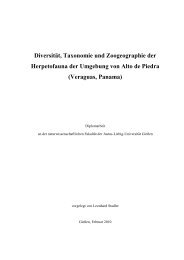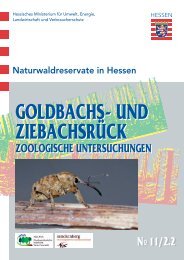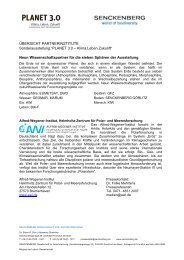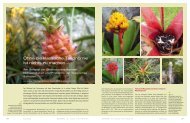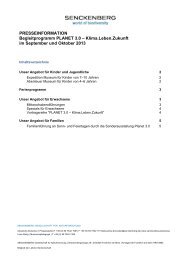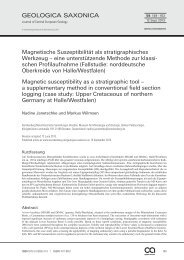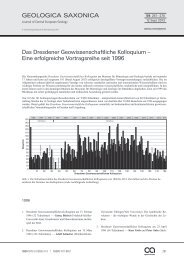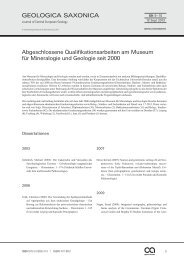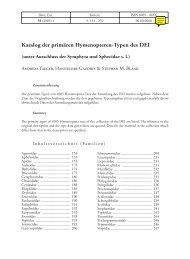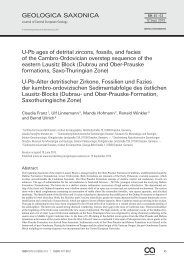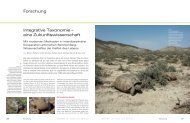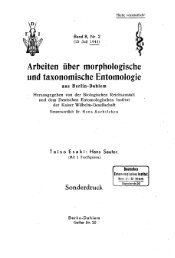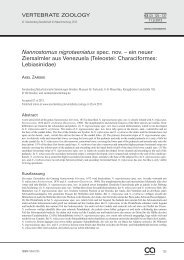Taxonomic publications: past and future - Senckenberg Museum
Taxonomic publications: past and future - Senckenberg Museum
Taxonomic publications: past and future - Senckenberg Museum
You also want an ePaper? Increase the reach of your titles
YUMPU automatically turns print PDFs into web optimized ePapers that Google loves.
Burckhardt & Mühlethaler (eds): 8 th GfBS Annual Conference Abstracts 14<br />
<strong>Taxonomic</strong> <strong>publications</strong>: <strong>past</strong> <strong>and</strong> <strong>future</strong><br />
Donat Agosti, Andrew Polaszek, Klemens Boehm & Guido Sautter<br />
Systematics is communicated through highly st<strong>and</strong>ardized <strong>publications</strong> that are<br />
descriptions of taxa (species <strong>and</strong> their relationships). These descriptions follow<br />
Codes (e.g. the International Code of Zoological Nomenclature for Zoology), <strong>and</strong><br />
have resulted in a corpus of more than one million printed documents, which unlike<br />
most branches of science remain part of the currently accessed body of knowledge.<br />
In the age of the internet, it seems obvious to make this entire knowledge accessible,<br />
especially if this would come at a cost of USD 1 per page <strong>and</strong> would, for the first time<br />
ever, would make this source open access in its entirety to anybody with access to a<br />
PC. Current trends, providing simply copies of the original <strong>publications</strong> through<br />
searchable databases, are now directed towards full text publication with mark-up of<br />
the logic content, i.e. the descriptions as the basic unit of these <strong>publications</strong> using<br />
XML mark schemas. However, three main reasons call for changing this basic unit.<br />
Increasingly, copyright disallows open access to systematics content, <strong>and</strong> thus<br />
prevents the majority of the scientists to at least viewing it, <strong>and</strong> thus needs a solution.<br />
Secondly, new algorithm allow to mine <strong>and</strong> extract information from vast body of<br />
data. Thridly, descriptions as the basic unit of systematics will be replaced by<br />
databases out of which descriptions, diagnosis, distributions <strong>and</strong> other features can<br />
be generated on dem<strong>and</strong> on the fly, dem<strong>and</strong>ed by the user groups of systematics.<br />
This advanced access to systematics information, the necessary changing basic<br />
underlying units such as character data matrices, access to name authority files,<br />
search algorithms <strong>and</strong> their impact, <strong>and</strong> its consequences on <strong>future</strong> publishing <strong>and</strong><br />
disseminating of information will be discussed.<br />
Org. Divers. Evol. 5, Electr. Suppl. 13 (2005)



